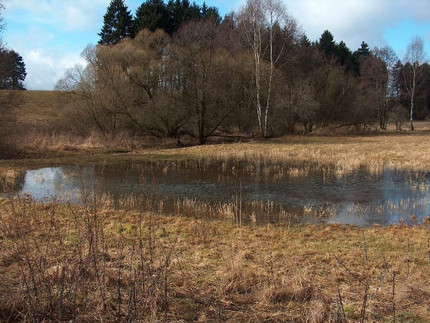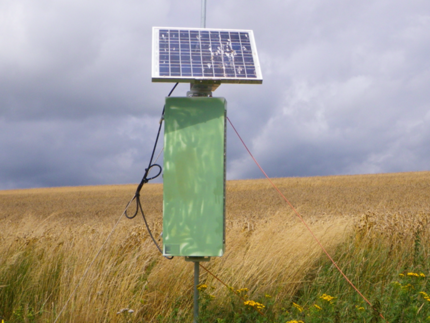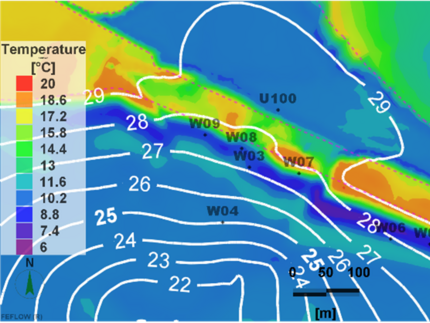Forschungsthemen
Unsere Forschungsthemen konzentrieren sich auf die Abschätzung der Bodenfeuchte im Landschaftsmaßstab, des Verbleibs von Mikroplastik in verschiedenen Umweltkompartimenten sowie der quantitativen und qualitativen Gefährdung von Grundwasserressourcen durch Klimawandel und Umweltverschmutzung.
- Wir entwickeln und arbeiten mit Cosmic-ray Neutron Sensing (CRNS) zur Messung des Wassergehalts von Ackerflächen, Wiesen und Wäldern, vom Feldmaßstab bis zum Regionalmaßstab. Diese Untersuchung der Bodenwasserspeicherung werden verknüpft mit hydrologischer Modellierung, Fernerkundung oder der Abschätzung der Grundwasserneubildung.
- Die Abundanz von Mikroplastik (MP) wird in Flüssen, Flussbetten und Grundwasser sowie in Böden untersucht, in denen wir spezielle nicht-invasive Methoden zur Detektion und Charakterisierung von Mikroplastik entwickeln. Darüber hinaus untersuchen wir die Abscheidungsprozesse von Mikroplastik, Translokationsprozesse und deren Verbleib in Gegenwart von Pflanzenwurzeln.
- Zur Beschreibung der Wechselwirkung zwischen Grundwasser und Oberflächenwasser sowie der Grundwasserentwicklung werden numerische Simulationen eingesetzt, die häufig mit Feldmessungen kombiniert werden, die das Vorkommen und den Abbau von Mikroverunreinigungen wie Pharmazeutika und Körperpflegeprodukten (PPCP) einschließen.
Kosmische Neutronen zur Erfassung des Bodenwassergehalts
Obtaining area average soil moisture for the root zone with Cosmic-ray neutron sensing (CRNS)
- Passive Neutron detectors
- Non-invasive installation
- Horizontal footprint 20ha
- Integration depth 40cm
ResearchUnit Cosmic Sense: Use and develop CRNS within an interdisciplinary team
- Massive Campaigns to map soil moisture distribution and dynamics at high resolution for small catchments
- Develop a Scanning Probe to obtain spatially resolved information on soil moisture distribution within the footprint
- Use CRNS soil moisture to estimate Groundwater Recharge and measure snow water equivalent to estimate the contribtion of snow melt in recharge
Verlagerungsprozesse von Mikroplastik und nicht-invasive Erforschung von Boden-Pflanze-Wechselwirkungen
We analyze the complex interaction of roots and soil using complementary 2D and 3D imaging approaches:
- Analysis of microplastic distribution by NIR-imaging in sediments and soils
- Neutron tomography
- root system, soil water distribution and root water uptake
- Combining Neutrons and X-rays
- Linking soil microstructure to rhizosphere hydraulics
- Combining neutron and fluorescence imaging
- Biogeochemical gradients (pH, oxygen, water content) influenced by plant root
Surface water - Groundwater Interactions
We aim to understand natural and human impacted systems and their temporal dynamics at the surface water - groundwater interface as well as in shallow aquifers:
- Representative groundwater sampling to access water level, temperature and solute concentrations
- Numerical modelling (e.g. Feflow, Modflow, HydroGeroSphere) to reproduce and evaluate natural and human impacted environments



